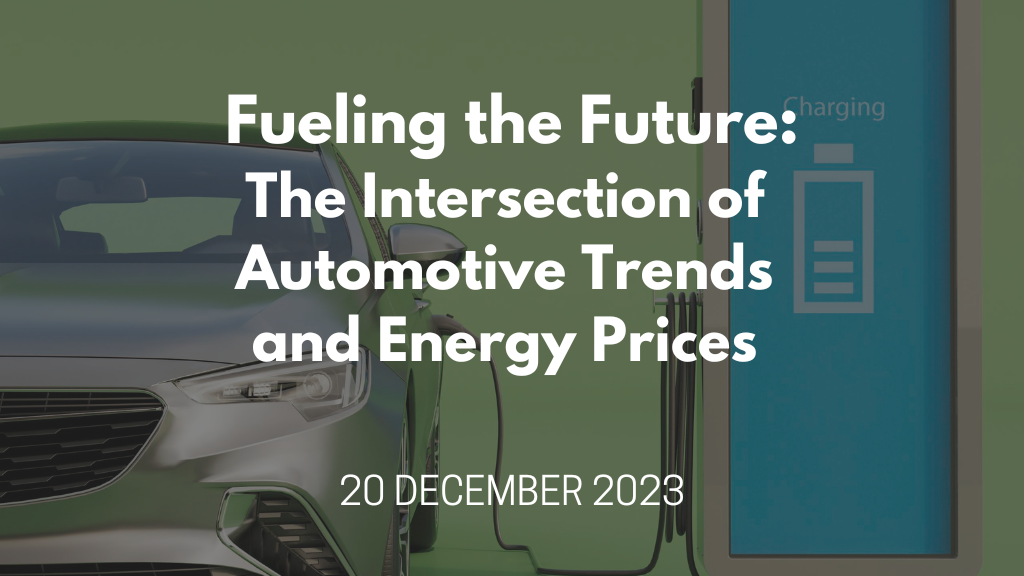Last Updated on December 22, 2023 by inaz Ameera
The automotive industry is at a nexus where the path to the future is increasingly shaped by two dynamic forces: evolving automotive trends and fluctuating energy prices. This intersection is not just redefining the vehicles we drive but also reshaping the broader economic and environmental landscapes.
Keypoints
- Positive outcomes, but concerns about the rise in electric vehicle (EV) production challenges and increase in labor costs which will impact profitability.
- Growing concern about the increasing difficulties in electric vehicle (EV) production, particularly around supply chain issues and higher production costs
- Macro uncertainty, inflation, higher rates, weak consumer confidence, and a potential US recession, forecast for 2024 is more constructive.
- Automotive inventory at an all-time high.
Vehicle prices will increase in 2024
Trends and forecasts are showing a straight direction towards a price hike in automobiles in 2024. Let’s find out why:
- Higher wages demanded by workers or agreed upon in new union contracts. These increasing costs of providing benefits to workers, such as healthcare, pensions, or other perks will directly impact the vehicle prices in the nearest future.
- Supply chain issues and the difficulties in obtaining essential components like batteries, semiconductors, or rare earth elements will also contribute to this rise in price.

- Raw materials price increase such as steel and aluminum which is extensively used in vehicle construction of frames and components.
- The automotive value chain which refers to the full range of activities required to bring a vehicle from conception to market, including design, production, marketing, and after-sales services is experiencing significant volatility due to factors like global supply chain disruptions, changing regulations, and rapid technological innovation.
Inventory climbs above the 5-yr average
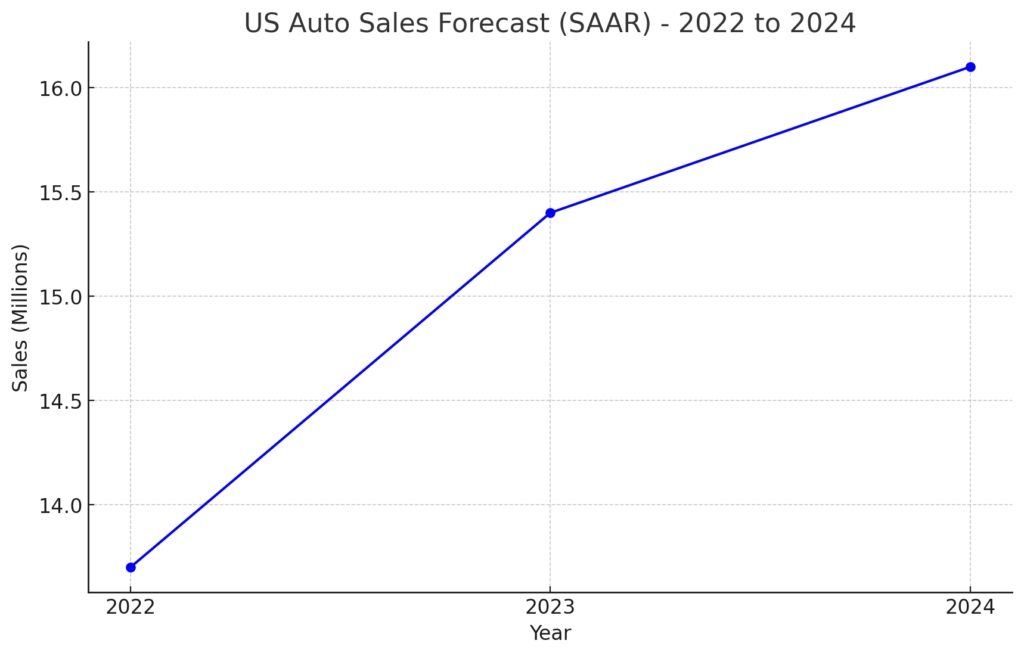
- After a SAAR of 13.7mm in 2022 and 2023 trending at ~15.4mm SAAR, auto sales estimated to increase to 16.1mm in 2024.
- November US Auto Sales were lighter than expected, with a SAAR of 15.3 million, below the forecast.
- Inventory climbs above the 5 year average. This increase comes as November sales were down MoM on a SAAR basis to 15.3mm.
- Cars and also trucks available in dealerships and storage facilities across the U.S. indicating a rise in inventory, can occur due to various reasons. Increased production, slower sales, or anticipation of higher demand might be the main causes of this significant rise.
- This does not necessarily mean bad news. It is good news – for the consumers! Dealerships might adjust their pricing strategies in response to higher inventory levels. Discounts, incentives and promotions might just be around the corner to encourage sales.
Are EVs the new crowd favourite?
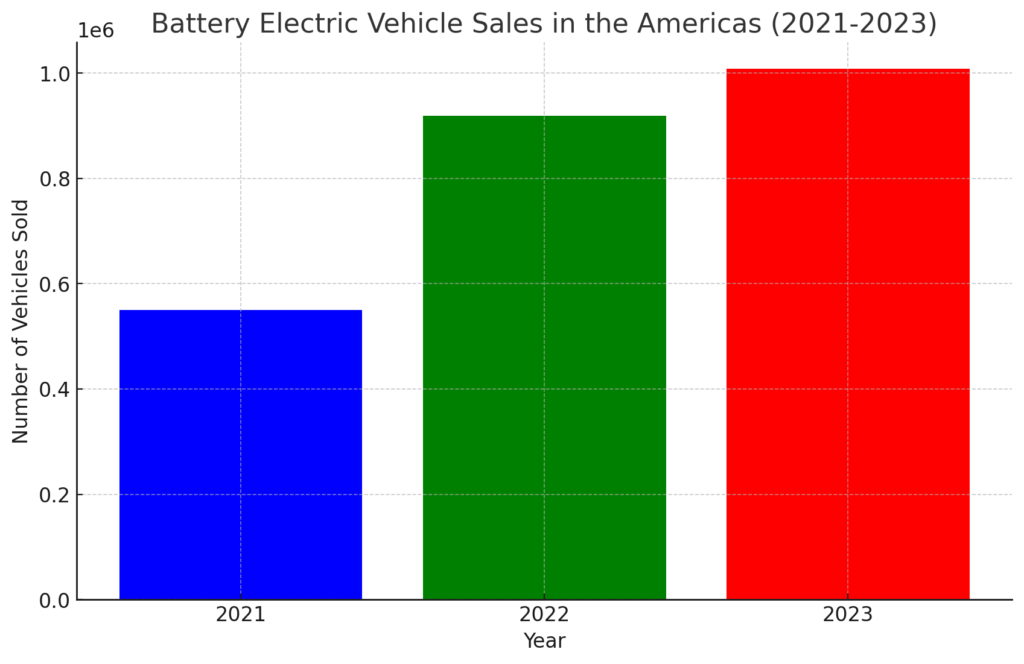
The answer is staring right back at us. Without a doubt, yes! EVs are indeed a crowd favourite. Let’s delve into why this trend is happening.
According to Cox Automotive, U.S. EV sales in Q2 2023 set a new record of 300,000 units, marking a 48% increase from Q2 2022. For additional context, a total of over 800,000 EVs were sold in the U.S. throughout the entire year of 2022, in addition to 190,000 PHEVs.
Total EV sales in Q3, according to an estimate from Kelley Blue Book, hit 313,086, a 49.8% increase from the same period one year ago and an increase from the 298,039 sold in Q2.
- In response to growing environmental concerns and technological advancements, there has been a significant surge in the production and adoption of electric vehicles.
- Consumers are gradually shifting their preferences towards these cleaner, more energy-efficient alternatives.
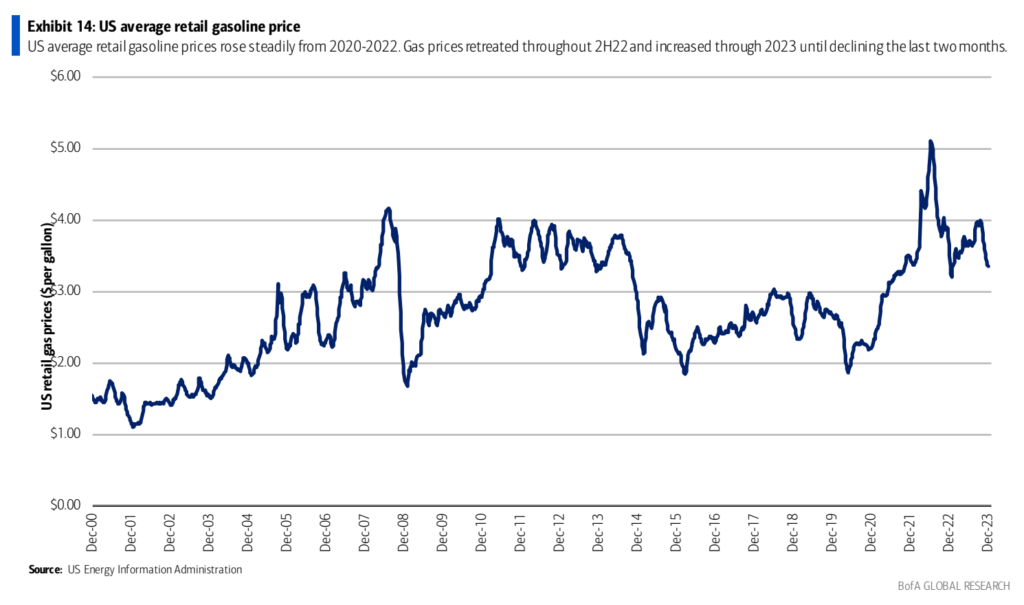
- Energy prices, particularly gasoline and diesel costs, have traditionally influenced consumer vehicle choices.
- High fuel prices will drive consumers towards more fuel-efficient models, including hybrids and fully electric vehicles.
- Younger buyers tend to be more environmentally conscious and tech-savvy, influencing the popularity of EVs and vehicles with advanced tech features.
This trend is further bolstered by government incentives and stricter emissions regulations worldwide. Periods of low fuel prices have historically seen a rise in the sales of larger, less fuel-efficient vehicles. Today’s market, however, shows a more complex scenario where consumer preferences are also heavily influenced by environmental concerns and technological allure, rather than just fuel prices.
Automakers are increasingly focusing on sustainability, not just in terms of vehicle emissions but across the entire value chain. From sourcing eco-friendly materials to minimizing the carbon footprint of manufacturing processes, the industry is undergoing a green revolution.
Economic downturns and booms significantly affect consumer spending power and preferences. For instance, during recessions, there’s a tendency to favor more affordable and fuel-efficient vehicles.
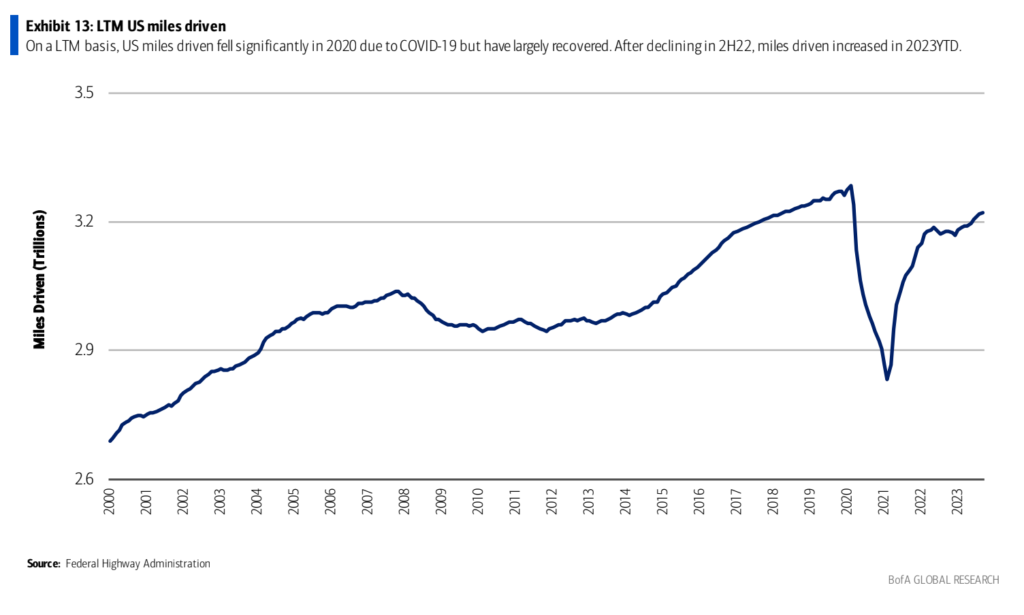
The total miles driven by U.S. consumers is a key indicator of automotive demand. Increased miles driven typically signifies higher demand for vehicles, as well as for automotive services and parts.
- Gasoline prices significantly influence driving habits and, consequently, the demand for vehicles. Higher gasoline prices often lead to reduced driving as consumers seek to lower their fuel expenses.
- When gasoline prices are low, consumers may be more inclined to drive longer distances and opt for larger, less fuel-efficient vehicles, which can boost sales in certain segments of the automotive market.
- High gasoline prices can strain household budgets, impacting overall consumer spending and economic growth.
- When consumer confidence is low, people tend to be more cautious with their spending, particularly on significant investments like cars. This caution can lead to a decrease in automotive sales.
- A robust job market and rising wages typically boost consumer confidence, leading to higher automotive sales. On the other hand, economic downturns, high inflation, or rising interest rates can diminish consumer confidence, negatively impacting vehicle sales.
Incentives & Pricing in 2024
In the automotive industry, incentives and pricing strategies play a crucial role in stimulating demand and managing inventory. Considering the forecast that price of vehicle prices will most likely increase in 2024 due to the above mentioned reasons, incentives will highly likely be much better to help boost more sales.
- Incentives, such as cash rebates, low-interest financing, or lease deals, are often used by manufacturers and dealers to attract customers and boost sales. These incentives can make vehicles more affordable, appealing to a wider range of consumers.
- During periods of slow sales or economic downturns, incentives can be increased to stimulate demand and prevent inventory buildup.
- Due to the high inventory levels in November, there will most likely be more incentives given in Q1 2024 to stimulate demand.
- High incentives, however, may sometimes lead to a decrease in brand value or resale value of the vehicles.
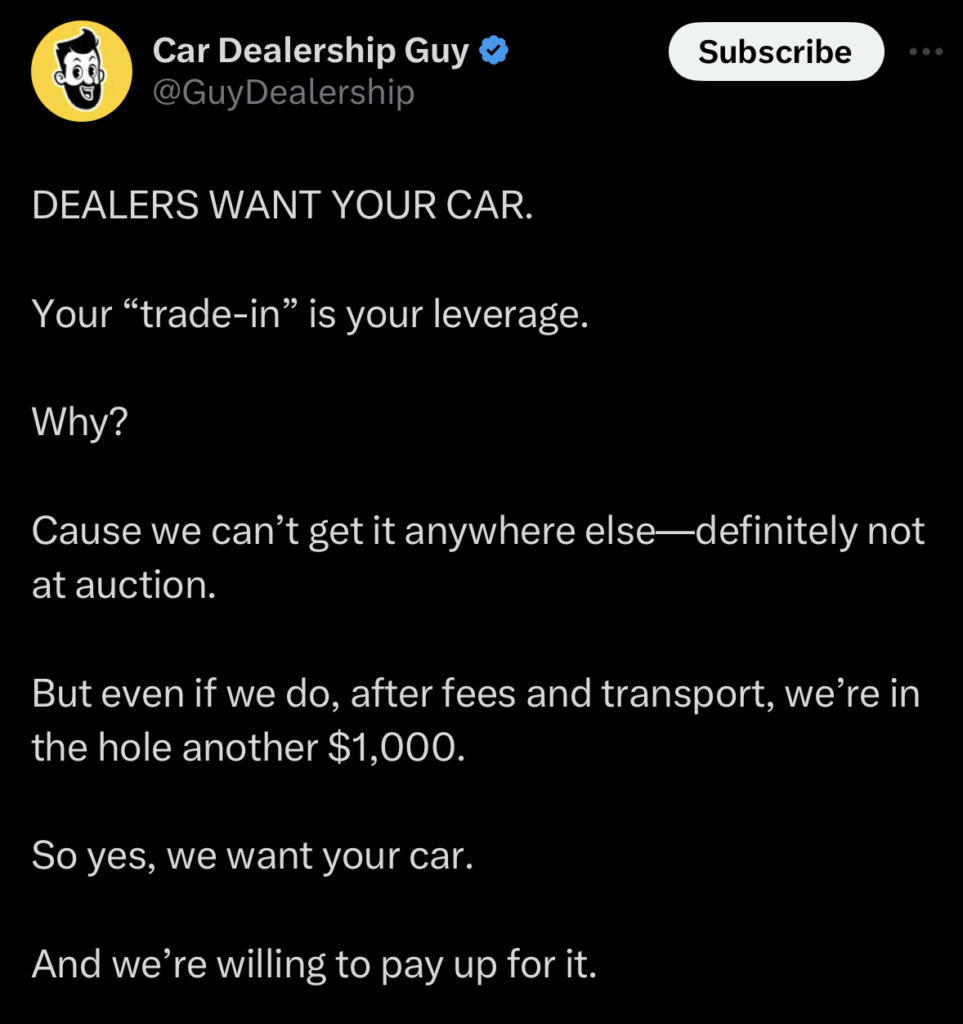
- Trade-In Bonuses have always been a magnet factor to increase sales and anchor consumer confidence. Additional value offered for trading in an old vehicle towards the purchase of a new one will play a huge role towards converting sales.
- If you’re planning to upgrade your car in the near future, Q1 2024 is most likely the best time.
Despite the clear trends towards electrification and sustainability, the industry faces significant challenges. These include the need for extensive charging infrastructure, concerns over the sourcing and disposal of batteries, and the high initial cost of electric vehicles.
However, these challenges also present opportunities for innovation, investment, and collaboration across sectors. As the automotive industry continues to evolve, the interplay between automotive trends and fluctuating energy prices will remain a critical area to watch. The decisions made by automakers, consumers, governments, and energy providers in the coming years will shape not just the vehicles on our roads but also the health of our planet and economies. In “Fueling the Future,” we are witnessing a fascinating journey, one that promises cleaner, more efficient, and more exciting automotive solutions for the years to come.

